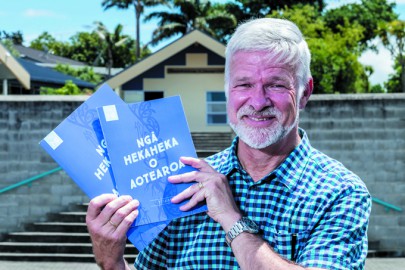
Dr Peter Buchanan holding Ngā Hekaheka o Aotearoa, a booklet he co-wrote on traditional Māori uses of fungi, launched at a kura kaupapa in Auckland.
The book, Ngā Hekaheka o Aotearoa, was launched at Auckland’s Te Kura Kaupapa Māori o Ngā Maungarongo in December last year. It combines Manaaki Whenua research with Māori knowledge of the uses of fungi, which played an important role in food, medicine, fire-carrying, and tattooing for early Māori.
Lead researcher and co-author Dr Peter Buchanan initiated the project in the hope of making this indigenous scientific knowledge more accessible to Māori students. Educationalist Dr Georgina Stewart from AUT and translator Hēni Jacob co-authored the resource.
Around 7,000 to 8,000 species of fungi have already been formally identified and named in New Zealand, but researchers expect there are thousands more. Many Māori names of fungi can no longer be matched to their relevant fungal species.
So far 108 kura kaupapa (Māori immersion schools) throughout New Zealand have received a class set of the student booklets and a teacher guide.
The project was funded by MBIE’s Curious Mindsprogramme.